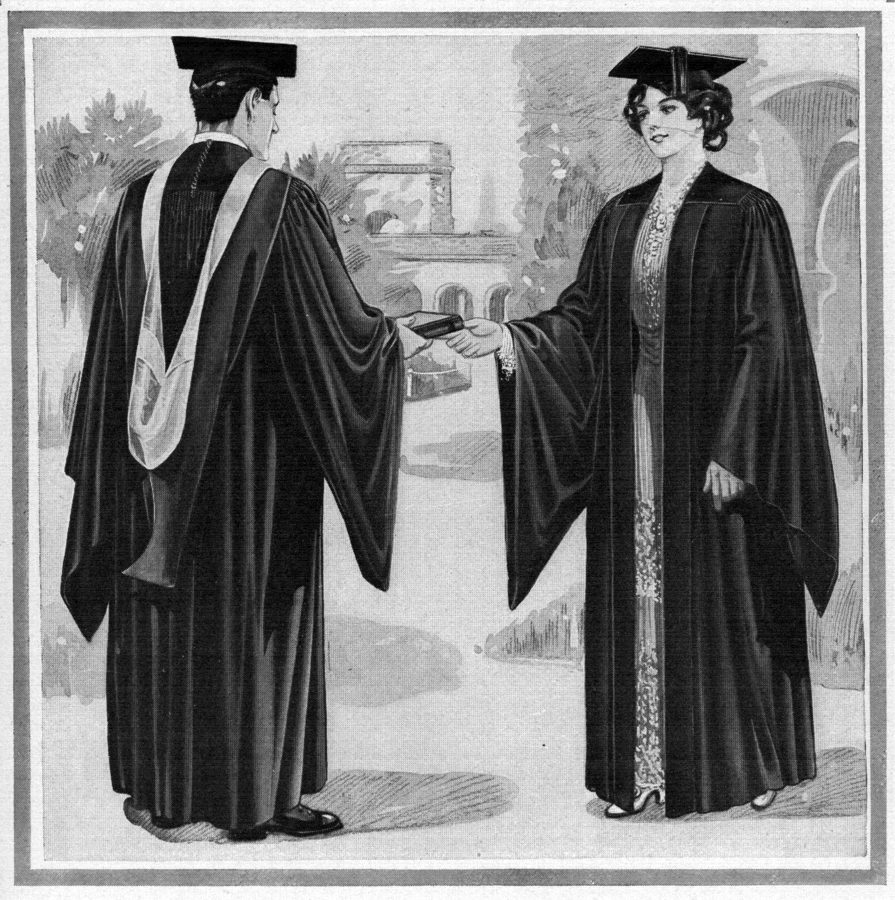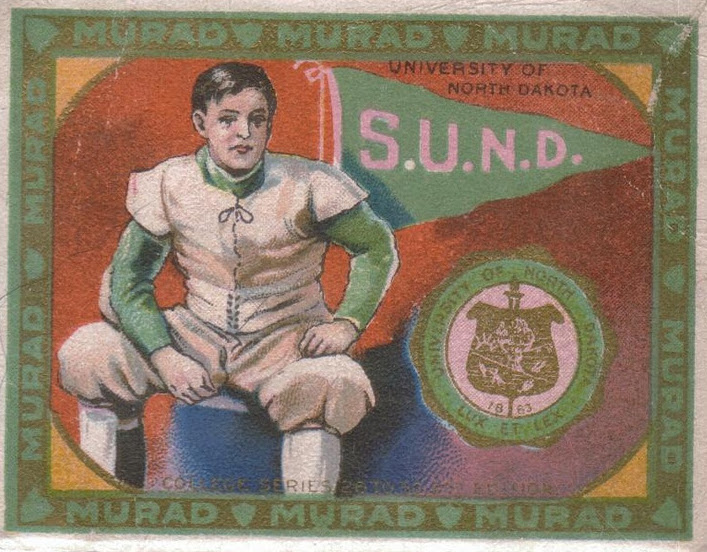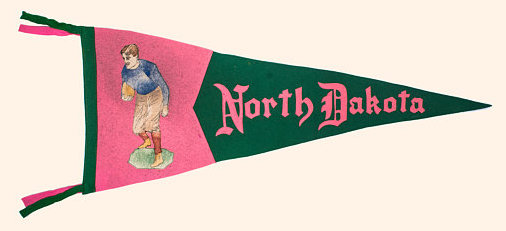University of North Dakota
North Dakota
1883




University of North Dakota students selected rose pink and green as their school colors in 1889. Green symbolized the grass of the prairies and rose symbolized the “rosy prospects” of the students after graduation. The school colors were also meant to honor the prairie rose and the green of its leaves. The university typically used a light and bright green hue during this period, but there were exceptions to this general rule.
Citations in the World Almanac (listed by cover date; color information is from the previous year): pink/green (1900-1910); rose/green (1911); pink/green (1912); rose pink/green (1913); pink/green (1914-1918); rose pink/green (1923-1931); pink/green (1934-1935)



The University of North Dakota first appeared in an Intercollegiate Bureau of Academic Costume (IBAC) hood lining list from 1927, where the university was said to have been assigned a “rose pink” hood lining with a “wheat green” chevron. A 1969 IBAC list revised the description of the color of the chevron to “apple green”, but a 1972 IBAC list reverted to the original description.
“Wheat green” and “apple green” were synonyms for a light but saturated shade of green, whereas “rose pink” typically described a cerise color rather than (plain) pink.